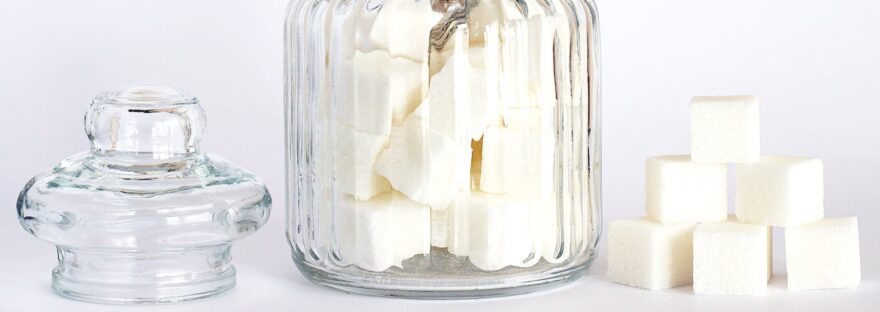There are numerous negative health effects of a diet high in sugar including increase of dental caries and increase in body weight, potentially leading to multiple chronic diseases including heart disease and type 2 diabetes. The information in this article applies to individuals who have no blood sugar management issues such as type 1 diabetes, type 2 diabetes, or gestational diabetes. If you have been diagnosed with a type of diabetes, including pre-diabetes, I strongly recommend that you request a referral from your Doctor to receive a consultation for diet education from a Registered Dietitian to teach you proper carbohydrate counting and other methods for managing your diet and blood sugars. Your future self will thank you for following the appropriate diet recommendations and managing your blood sugars.
No matter what sweetener you are using, whether it’s brown sugar, maple or date syrup, or even organic cane sugar, it is still a source of extra calories. Unless of course the sweetener you’re using is a non-nutritive sugar substitute like splenda, erythritol or stevia.
The problem with sugar is the quantity of sugar we consume daily. There are times in life when we want to have a treat, and that’s ok! Moderation really is important for so many things nutrition-related, especially sugar. I’m not here to tell everyone to stop eating sugar; we honestly couldn’t even if we tried. And why should we? Sugar can be a delicious part of a well rounded diet.
Added Sugar vs Naturally Occurring Sugar
Added sugars and naturally occurring sugars are not the same. The sugar in fruit is not the same as the sugar added to processed foods and baked goods. Fruits do contain sugar, but fruits are also loaded with fiber to help your digestive tract and vitamins/minerals to support your metabolism and other bodily functions. The fiber in fruit slows down how quickly the sugar in that fruit reaches your blood stream as it slows the transit time through your gastrointestinal tract. Slower transit time means you feel satisfied for longer so you will likely not need to eat again for a little while. When you eat foods with added sugars, like a candy bar, there is generally no fiber to slow down digestion and generally no vitamins/minerals for your body to take in and use.
Let’s compare the nutrition of 1 tbsp white cane sugar and 1 medium banana. According to the USDA 1 medium banana (118g) provides 105 calories, 422mg potassium, 1mg sodium, 3.1g fiber, 14g sugar (about 3.5 tsp), and 1.3g protein. One tablespoon of cane sugar provides 48 calories, 0mg potassium, 0mg sodium, 12.6g sugar (about 3.15 tbsp), and 0g protein. When comparing the two, you’ll notice that the banana and the plain tablespoon of sugar are almost identical in the grams of sugar provided and both are a low/no sodium food. The important difference is that the banana also provides potassium, fiber, and protein. This means that you’ll feel more satisfied eating 1 medium banana than 1 tbsp of sugar and your body’s metabolic processes will thank you for the potassium.
Sugar in some common foods:
- Many low-fat flavored yogurts can have 45g of sugar or more per serving. That’s approximately 11.25 teaspoons of added sugar.
- One frosted blueberry Pop-tart contains 18g of sugar. That’s 4.5 tsp in only 1 pop tart. Who eats only 1 pop-tart? They come 2 per pack and we all know 1 isn’t enough for satiety.
- One can of Red Bull has 5.35 teaspoons of sugar. Mixing that with alcohol? Don’t forget the sugar in your liquor of choice.
- Snickers bars contain 57g sugar per servings. That’s 5.83 tablespoons!
Sugar Intake Recommendations
The American Heart Association (AHA) recommends limiting your daily added sugar to no more than 10% of your discretionary calories. Discretionary calories means the “extra” calories you have after your body has met all of its macro and micronutrient needs. For example, if you require 2000 calories/day but meet all of your body’s minimum needs of macro and micronutrients with only 1900 calories, this leaves you 100 discretionary calories. The AHA also notes that the amount of added sugar daily for women should be limited to approximately 6 tsp daily and 9 tsp daily for men. That means if you ate 1 low-fat flavored yogurt today, you’re already over the recommended amount of added daily added sugar consumption.
Remember that all foods can fit into a well balanced diet, including sugary ones. Eating isn’t only about survival and fueling our bodies, it should be fun, too. Check out some of my favorite sweet recipes including banana nice cream and frozen pumpkin spice bites!

